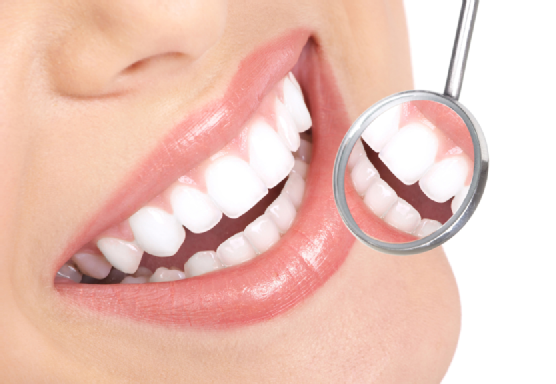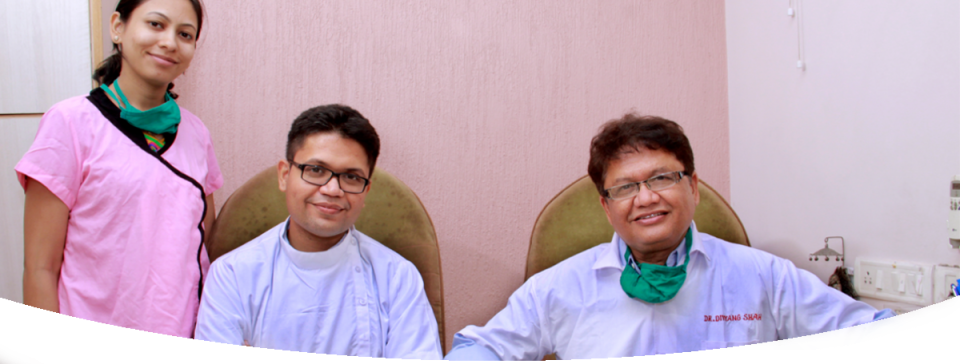What Are The Dental Implants?
Dental Implants are permanent tooth replacements. They hold a crown, bridge or denture just like the roots would hold the natural teeth in place. Many dentists consider implants to be one of the greatest advancements in dentistry since they truly are “the next best thing to your natural teeth.” Unlike a traditional plate or bridge, dental implants are actually anchored to your jaw. After an integration with the jawbone, the crown, bridge or denture is then attached to the implants. This provides much greater stability for more effective eating, speaking and smiling!
People of all ages are discovering how they can improve their lives with dental implants. No more messy, ineffective adhesives for denture wearers. With dental implants, denture wearers report eating foods that they have not had in years! Say goodbye to slipping partials and uncomfortable dentures. Implants allow for a secure solid fit of the more comfortable palate less denture.
Implants can even help a patient missing just one tooth. In the past, the two adjacent healthy teeth had to be ground down and “sacrificed” to build a three-unit bridge to replace the single missing tooth. Today, a single implant can often be placed in between the teeth, and the crown can be fabricated without affecting the healthy teeth.
So if you are a candidate for dental implants, don’t put off getting a complete professional evaluation any longer. Not everyone is a viable candidate for dental implants. A comprehensive evaluation with your general dentist and your implant surgeon will allow you to understand all of your treatment options and choose a dental solution for improving your life.
Benefits of Dental Implant:

Getting back the natural smile you always wanted: Dental Implant provides you the most realistic smile possible. Implant treatment gives you the teeth that emerges right from your gums. Moreover the implant-supported dentures maintain the face contours to minimize premature wrinkles.
Gain your self-confidence: Dental implants allow you to speak, eat, sing and kiss – in other words, allow you to do everything that you want – with total self-assurance.
Maintenance of your jawbone: Dental implants maintain the jawbone and prevent you from getting the old look that follows due to a loss of teeth and jawbone.
Ultimate fitting of your old denture
Preservation of your natural teeth: Dental implants eliminate the need to grind your healthy teeth for a fixed bridge. Hence, it also reduces extra load on natural teeth and enhances their life.
Long lasting restoration: Dental implants offer you the longest possible life of your artificial teeth. Hence you don’t need to spend your valuable time and hard earned money repeatedly on dental treatments.
Do Implant Procedures cause much pain?
In most cases, these procedures produce very little, if any, discomfort. In fact, many patients do not have to use any pain pills. Your decision to use implants will help you to avoid much pain and discomfort in the long term. Besides, given the overall health care benefits, you should not deny yourself proper treatment out of fear of pain. At Bhavna Dental Clinic, we have developed a variety of pain control protocols to ease you through implant treatments. Kindly refer to
painless dentistry at Bhavna Dental Clinic.
Single tooth implant:
When one tooth is missing, implant placement prevents the need to grind the adjacent teeth for a fixed bridge. It also provides the best looking restoration that can’t be differentiated from adjacent teeth. Moreover, individual teeth can also prevent joint problems that occurs due to any faulty bridge design.

Implant-supported fixed bridge
When several teeth in a row are missing, they can be replaced by a bridge anchored to implants. An implant is not needed for each tooth being replaced. Three or four teeth can be replaced with just two dental implants for support. This is less expensive than placing an individual implant for each tooth being replaced. Dental implants are strong and can support the biting forces of several teeth when they are anchored together.

Full MouthTreatment

An entire mouth can be rebuilt using the dental implants to support the replacement teeth. The most natural results are achieved when a beautiful porcelain crown and bridge treatment is used in conjunction with a precise implant placement. Usually, 6-8 implants on the upper and 4-6 implants on the lower are used to support an entire set of porcelain teeth.
The teeth are cemented or screwed in and they look and feel just like the real teeth.
Implant-supported denture

An implant-supported denture is a type of an overdenture that is supported by and attached to implants. A regular denture rests on the gums and is not supported by implants.
An implant-supported denture is used when a person doesn’t have any teeth in the jaw but has enough bone in the jaw to support implants. An implant-supported denture has special attachments that snap onto attachments on the implants.
The implant-supported dentures usually are made for the lower jaw because regular dentures tend to be less stable there. Usually, a regular denture made to fit an upper jaw is quite stable on its own and doesn’t need the extra support offered by the implants. However, you can receive an implant-supported denture in either the upper or lower jaw.
You should remove an implant-supported denture daily to clean the denture and gum area. Just as with regular dentures, you should not sleep with the implant-supported dentures at night. Some people prefer to have fixed (permanent) crown and bridgework in their mouths that can’t be removed. Your dentist will consider your particular needs and preferences when suggesting fixed or removable options.
I am desperate to get implants but do not have sufficient jawbone to place implants, is there any solution?
At Bhavna Dental Clinic, our dental implant specialists are highly trained to perform bone grafting procedure that creates bone to place the dental implants. Dr. Dipen Shah, who specializes in dental implants has done a variety of complex bone grafting procedures to place implants. He is amongst the very few certified dental implant sinus surgeons in India. We are equipped with the latest bone grafting equipments like bone mill, peizo surgery unit, specialized sinus grafting kits to enhance the success of grafting procedures.
Why do I have less bone?
There are several reasons for this:
- Many people who have lost teeth in their upper jaw — particularly the back teeth or molars — do not have enough bone for implants to be placed. Because of the anatomy of the skull, the back of the upper jaw has less bone than the lower jaw.
- Bone may have been lost because of periodontal (gum) disease.
- Tooth loss may have led to a loss of bone as well. Once teeth are gone, bone begins to be resorbed (absorbed back into the body). If teeth have been missing for a long time, there often is not enough bone left to place implants.
- The maxillary sinus may be too close to the upper jaw for implants to be placed. The shape and the size of this sinus varies person to person. The sinus can also get larger as you age.
Implants with bone grafting
Bone grafts can be used when available bone is not sufficient. When bone defect is too large, the bone graft generally need to be placed in advance to gain sufficient bone before an implant placement. However, for small defects, bone grafting is done simultaneously along with the implant placement to reduce the treatment time. Bone grafts may be autologous (bone harvested from the patient’s own body, often from the iliac crest), allograft (cadaveric bone usually obtained from a bone bank) or synthetic (often made of hydroxyapatite or other naturally occurring and biocompatible substances) with similar mechanical properties to bone. Most bone grafts are expected to be reabsorbed and replaced as the natural bone heals over a few months’ time.

Implant with sinus grafting
A sinus grafting is a surgery that adds bone to your upper jaw in the area of your molars and premolars. It’s sometimes called a sinus augmentation. The bone is added between your jaw and the maxillary sinuses, which are on either side of your nose. To make room for the bone, the sinus membrane has to be moved upward, or “lifted.” A sinus lift usually is done by a specialist. Dr. Dipen Shah, who is a certified sinus surgeon, performs this procedure with great precision and success. We have a modern motorized sinus kits to avoid unpleasant tapping with mallet, which is generally performed to lift the sinus membrane.

A sinus grafting is done when there is not enough bone height in the upper jaw or the sinuses are too close to the jaw for dental implants to be placed.




 An implant-supported denture is a type of an overdenture that is supported by and attached to implants. A regular denture rests on the gums and is not supported by implants.
An implant-supported denture is a type of an overdenture that is supported by and attached to implants. A regular denture rests on the gums and is not supported by implants.










